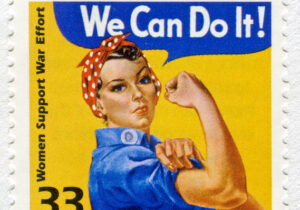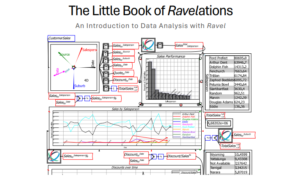The bank regulations that changed in the United States to help pay for world war two almost exclusively affected operations of the Federal Reserve, which makes sense when you consider that the war was managed by the federal government, and that’s where they bank.
The government saw a need to provide A LOT of cash, keep the industries of war manufacturing going, and keep inflation as low as possible.
For the latter, I say “as low as possible” because in an environment where a government simultaneously adds a lot of money to an economy while buying much of what is available to buy (for the war effort), shortages, and hence inflation, seem inevitable.
————————————
This post is part of a larger series and sub-series.
Here is a link to the series: The history of banks and banking regulation
and to the sub-series: United States Banking and Bank Regulation History
————————————
However, the changes to US banking regulation kind of pale by comparison to how banking systems all over the world changed as the war was coming to a close, and how international agreements would change finance from then on.
Table of Contents
Using reserves (bank regulation) to adjust aggregate credit
The federal reserve started using bank reserve requirements to expand, and contract, the availability of credit in the US banking system.
The US economy shrunk pretty significantly after the stock market crash in Oct of 1929. This was accompanied by four years of deflation during which some months experienced an annualized deflation rate of over 10%. To counteract this monetary contraction, the Federal Reserve lowered the reserve requirements to stimulate lending and economic growth, and this helped. The subsequent growth was accompanied with inflation from 1934 to 1937 during which some months experienced annualized inflation rates of over 5%.
To curtail credit, the Fed increased the reserve requirements again.
After Pearl Harbor
The USA went on a war time footing, which included what by today’s standards would look like pretty heavy handed government intrusion into the economy.
Price controls, rationing, centralized production planning, and of course the Treasury injecting massive amounts of money into the economy due to it buying so much of US GDP for the war effort.
The Fed set maximum yields on government bonds to 2.5% for long-term bonds and 3/8ths of one percent for 90 day bonds.
The Fed also increased banking reserves by simply injecting cash into the banking system by buying massive amounts of government bonds from member banks, as well as lowering reserve requirements and leaving them low for the duration of the war.
This was faciliated when in 1943 Congress passed legislation exempting government war loan deposit accounts from reserve requirement and deposit insurance assessments.
The years 1942 and 1943 also saw a large number of Presidential executive orders pretaining to the war.
There were quite a few, and many related to the use of public (federal) land, but some of the most significant related to economic activity and oversight are:
- 16 January 1942: Executive order 9024 established the War Production Board
- 7 Febuary 1942: Executive order 9054 established a War Shipping Administration
- 26 March 1942: Executive order 9112 authorized the financing of contracts for the war effort
- 10 April 1942: Executive ordwer 9127 setup an auditing function within the war department of factories working on war department contracts
Again, there were quite a few, and the ones that seem the most significant are:
- 9 Feburary 1943: Executive order 9301 set the minimum wartime work week to forty eight hours
- 23 March 1943: Executive order 9319 established the “petroleum administration for war”
- 7 April 1943: Executive order 9327 strengthened federal overisight of production planning
- 19 April 1943: Executive order 9334 created the war food administration
- 24 April 1943: Executive order 9336 authorized further financing arrangements for the war
- 14 June 1943: Executive order 9351 literally authorized the war department to take over operation of a specific factory in Philadelphia.
- 3 September 1943: Executive order 9375 authorized the war department to take over operation of another factory (Brooklyn this time).
- 19 December 1943: Executive or5der 9408 authorized the war department to take over operation of yet another factory (near Baltimore).
The international community
World war 2 was a major turning point for most nations. Nations worked together to a degree never before seen, and manufacturing, financed through various financial institutions and policies, made the difference between victory and defeat.
I was unable to find a clip of a specific move scene that illustrates this concept really well, so I’ll describe it as best I can. The movie is The Longest Day, released in 1962. Very early in the allied invasion, a German platoon comes upon the some trash left earlier by American forces. The German officer looks around and pessimistically declares to his men that they’ve lost the war, it’s only a matter of time.
The men push back on this idea. So the officer picks up a pink cake box with a label from a bakery in Boston and shows it to his men. He declares that Germany simply can not compete with an army that has so many planes and so much fuel that they can fly in chocolate cake from Boston.
And, while he was a fictional character in a movie, he was right.
During the course of the war, American factories built, for the war needs, a vehicle every 6 minutes and an airplane every hour.
World war 2 effectively set the stage for financial globalization. The whole neoliberal economic system in which globalization flourished was 35 years away, but the financial system setup as the war was coming to an end laid the foundation that made it possible.
The Bretton Woods System is central to this new world order. It changed global financial systems from that point on.
The International Monetary Fund and the World Bank were created in 1944. The GATT (General Agreement of Tariffs and Trade) was created in 1947, and in 1995 would change into the World Trade Organization.
Initially everyone pegged the value of their currencies to gold, and as such their values were all pegged to each other, but as nations stopped using the gold standard and it was necessary for currency exchange rates to float, the Foreign Exchange Market (Forex) became the means of nations trying to regulate their value of their currency relative to others.
Today, Forex is the largest market in the world, with daily transaction volumes of $6.6 trillion.
In summary
Quite literally, the financing of world war 2 changed the trajectory of human civilization. It very much created tolerance for very strong federal governments, and setup a global financial system, the rules of which define “western capitalism” to this day. Neoliberal economics can directly trace it’s existence to the institutions and financing rules created as world war 2 was drawing to a close.



